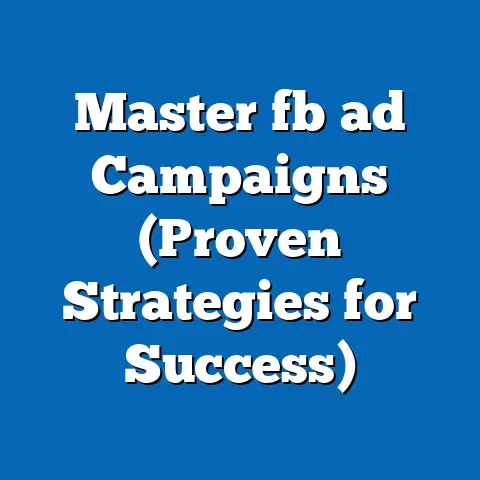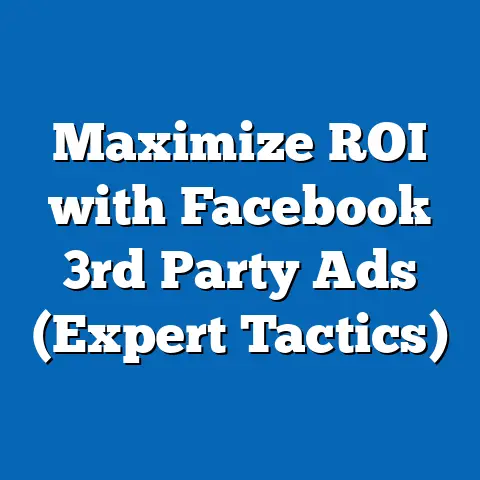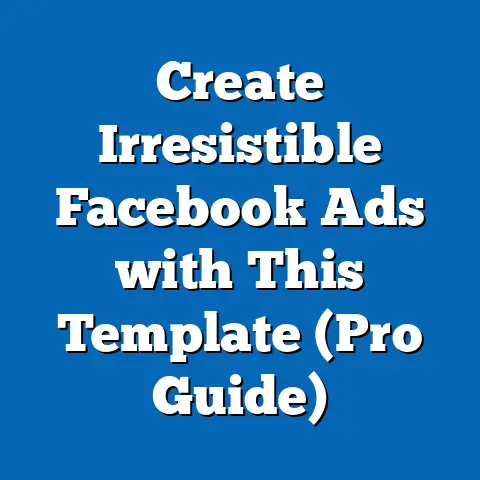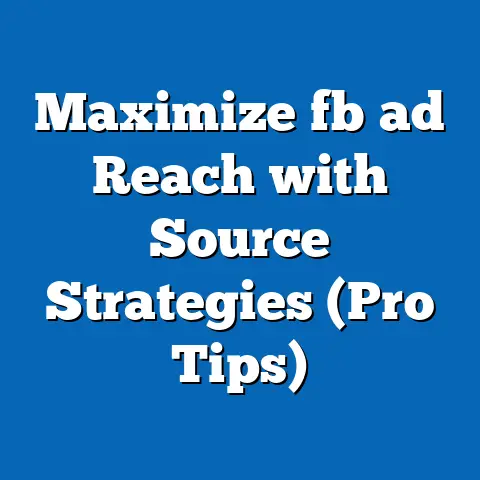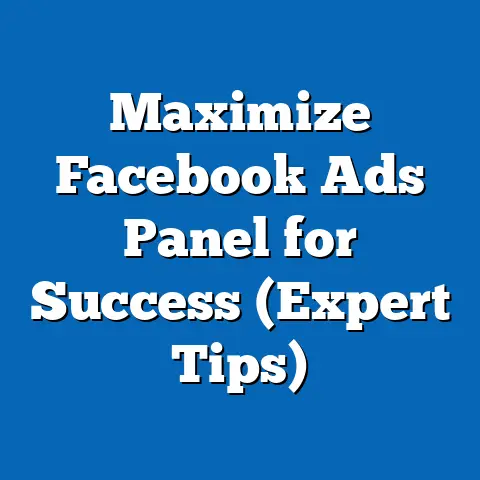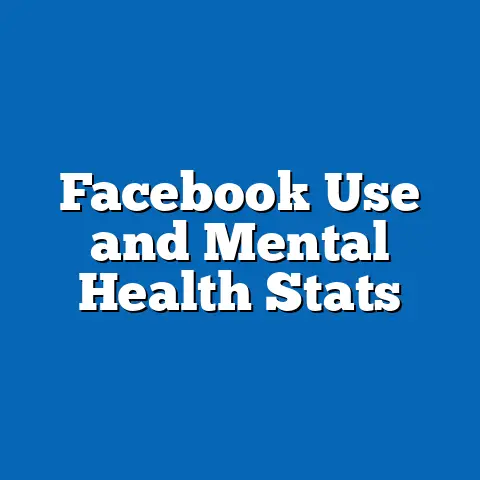Do I Have to Pay for Facebook Ads? (Essential Insights)
As a digital marketing specialist, I’ve heard the question, “Do I have to pay for Facebook ads?” more times than I can count. Businesses, especially startups, are always looking for quick solutions to boost their visibility without breaking the bank. Facebook, with its billions of users, is undeniably a marketing goldmine. But navigating its advertising landscape can feel like deciphering a complex code. The truth is, while you can use Facebook for free, achieving significant, measurable results often requires a strategic investment.
In this article, I’ll break down the essential insights you need to understand the role of paid advertising on Facebook. We’ll explore the difference between organic and paid reach, dissect the cost structure of Facebook ads, and examine free alternatives to paid advertising. By the end, you’ll have a clear understanding of whether paying for Facebook ads is necessary for your business and how to make the most informed decision. Let’s dive in!
Understanding Facebook Ads
Before we get into the nitty-gritty of costs, let’s establish a solid foundation. What exactly are Facebook Ads, and how do they work?
Defining Facebook Ads
Facebook Ads are paid messages that businesses create and display on Facebook (and its related platforms like Instagram, Messenger, and the Audience Network) to reach a specific audience. These ads can appear in various formats, tailored to different marketing objectives. I’ve seen firsthand how a well-crafted ad can transform a business’s online presence.
Here’s a quick rundown of common ad formats:
- Image Ads: Simple yet effective, these ads use a single image to convey your message. They’re great for showcasing products or services visually.
- Video Ads: Engaging and dynamic, video ads capture attention and allow you to tell a compelling story. They’re perfect for demonstrating product features or sharing customer testimonials.
- Carousel Ads: These ads feature multiple images or videos that users can swipe through, allowing you to showcase different products or highlight various aspects of your brand.
- Collection Ads: Designed for e-commerce businesses, collection ads display a catalog of products that users can browse and purchase directly from Facebook.
- Lead Ads: These ads make it easy for users to submit their contact information directly from the ad, making them ideal for lead generation campaigns.
Reach and Engagement
The primary benefit of Facebook Ads is their ability to reach a massive audience and drive engagement. With over 2.9 billion monthly active users, Facebook offers unparalleled reach for businesses of all sizes.
According to Facebook’s own data, ads on the platform can reach up to 31.9% of the world’s population aged 13 and older. This vast reach, combined with Facebook’s sophisticated targeting options, allows you to connect with potential customers who are most likely to be interested in your products or services.
Moreover, Facebook Ads can generate significant engagement, including likes, comments, shares, and website clicks. This engagement not only increases brand awareness but also helps to build relationships with your audience and drive conversions.
Organic vs. Paid Reach
Now, let’s talk about the critical difference between organic and paid reach. Organic reach refers to the number of people who see your content without you paying for distribution. This typically includes your followers and their friends who may see your posts through shares or comments.
In the early days of Facebook, organic reach was much higher. Businesses could post content and expect a significant portion of their followers to see it. However, as Facebook’s algorithm has evolved, organic reach has declined significantly.
Today, only a small percentage of your followers (typically around 1-6%) will see your organic posts. This is due to several factors, including the increasing volume of content on Facebook and the platform’s focus on prioritizing content from friends and family.
Paid reach, on the other hand, refers to the number of people who see your content as a result of paid advertising. By investing in Facebook Ads, you can significantly expand your reach and ensure that your message is seen by a much larger and more targeted audience.
In my experience, relying solely on organic reach is no longer a viable strategy for most businesses. While creating engaging content is essential, paid advertising is often necessary to cut through the noise and reach your target audience effectively.
The Cost Structure of Facebook Ads
Okay, let’s get down to brass tacks: how much does it actually cost to advertise on Facebook? The answer, as with most things in marketing, is “it depends.” But I’m here to give you a clear picture of the factors involved.
Budgeting for Facebook Ads
Budgeting for Facebook Ads involves understanding the various pricing models available and setting a budget that aligns with your marketing objectives. Facebook Ads operate on an auction-based system, meaning that you bid against other advertisers to display your ads to your target audience.
Here are the most common pricing models:
- Cost Per Click (CPC): You pay each time someone clicks on your ad. This model is ideal for driving traffic to your website or landing page.
- Cost Per Impression (CPM): You pay for every 1,000 impressions your ad receives. This model is best for increasing brand awareness and reaching a large audience.
- Cost Per Action (CPA): You pay only when someone takes a specific action, such as making a purchase, filling out a form, or downloading an app. This model is ideal for driving conversions and achieving specific business goals.
The average CPC on Facebook varies depending on your industry, target audience, and ad quality. According to recent data, the average CPC across all industries is around \$0.97. However, some industries, such as finance and insurance, may have higher CPCs due to increased competition.
The average CPM on Facebook also varies depending on these factors. The average CPM across all industries is around \$7.19.
When setting your budget, it’s essential to consider your marketing objectives, target audience, and the potential return on investment (ROI). Start with a small budget and gradually increase it as you optimize your campaigns and see positive results.
Minimum Spend Requirements
One common question I get is whether there are minimum spend requirements for running Facebook Ads. The good news is that Facebook doesn’t have a strict minimum spend requirement. You can technically start advertising with as little as \$1 per day.
However, it’s essential to be realistic about what you can achieve with such a small budget. With a very low daily budget, you may not be able to reach a significant audience or generate meaningful results.
In my experience, a more realistic daily budget for most businesses is around \$5-\$10. This will allow you to reach a larger audience, test different ad creatives, and optimize your campaigns for better performance.
Factors Influencing Cost
Several factors can influence the cost of your Facebook Ads. Understanding these factors can help you optimize your campaigns and reduce your advertising costs.
- Audience Targeting: The more specific your audience targeting, the higher the cost of your ads. This is because you’re competing with other advertisers who are targeting the same niche audience. If you try to target too narrow of an audience, you may find that your ads are not delivering as much value.
- Competition: The more competition there is in your industry, the higher the cost of your ads. This is because you’re bidding against other advertisers who are trying to reach the same audience.
- Ad Quality: Facebook rewards high-quality ads with lower costs and better placement. Ad quality is determined by factors such as relevance, engagement, and landing page experience.
- Seasonal Trends: Advertising costs tend to increase during peak seasons, such as holidays and major shopping events. This is because more businesses are advertising during these times, which increases competition.
- Ad Placement: Where your ad appears on Facebook and Instagram can impact your costs. For example, ads in more visible placements like the news feed might cost more than those in the right column.
By understanding these factors and optimizing your campaigns accordingly, you can significantly reduce your advertising costs and improve your ROI.
Free Alternatives to Facebook Ads
While paid advertising can be highly effective, it’s not the only way to reach your audience on Facebook. There are several free alternatives that businesses can leverage to increase their visibility and engagement without spending a dime.
Utilizing Organic Content
Creating high-quality, engaging organic content is the foundation of any successful Facebook strategy. Organic content is content that you post on your Facebook Page without paying for distribution.
Here are some effective strategies for creating shareable content:
- Post Regularly: Consistency is key. Aim to post several times per week to keep your audience engaged and informed.
- Use High-Quality Visuals: Images and videos are much more engaging than text-only posts. Use high-resolution photos and videos that are relevant to your audience.
- Tell Stories: People love stories. Share stories about your brand, your customers, and your industry.
- Ask Questions: Asking questions is a great way to spark conversation and encourage engagement.
- Run Contests and Giveaways: Contests and giveaways are a fun way to attract new followers and increase engagement.
Engagement Strategies
In addition to creating great content, it’s essential to actively engage with your audience. This means responding to comments and messages, participating in relevant conversations, and building relationships with your followers.
Here are some effective engagement strategies:
- Respond to Comments and Messages Promptly: Show your audience that you value their input by responding to their comments and messages as quickly as possible.
- Participate in Relevant Conversations: Join relevant Facebook Groups and participate in conversations related to your industry.
- Run Facebook Live Sessions: Facebook Live is a powerful tool for connecting with your audience in real-time. Use it to host Q&A sessions, share behind-the-scenes content, or demonstrate your products.
- Encourage User-Generated Content: Encourage your audience to share their own content related to your brand. This can include photos, videos, and testimonials.
While organic strategies can be effective, it’s important to remember that they take time and effort. Building a strong organic presence on Facebook requires consistent effort and a long-term commitment.
Conclusion
So, do you have to pay for Facebook ads? The answer, as we’ve explored, is nuanced. While you can certainly leverage organic strategies to reach your audience, achieving significant, measurable results often requires a strategic investment in paid advertising.
The key takeaways from this article are:
- Facebook Ads offer unparalleled reach and targeting capabilities.
- Organic reach is declining, making paid advertising increasingly necessary.
- Understanding the cost structure of Facebook Ads is essential for effective budgeting.
- Several factors can influence the cost of your ads, including audience targeting, competition, and ad quality.
- Free alternatives to Facebook Ads exist, but they require consistent effort and a long-term commitment.
Ultimately, the decision of whether to invest in Facebook Ads depends on your specific business needs and goals. If you’re looking to quickly reach a large, targeted audience and drive measurable results, then paid advertising is likely the way to go. However, if you’re on a tight budget and willing to invest the time and effort, you can certainly build a strong organic presence on Facebook.
Remember, the most effective Facebook strategy often involves a combination of both paid and organic tactics. By creating high-quality content, engaging with your audience, and strategically investing in paid advertising, you can maximize your reach, engagement, and ROI on Facebook.
Now, it’s your turn! I encourage you to evaluate your specific business needs and goals and determine whether investing in Facebook Ads is the right decision for you. And if you’re already running Facebook Ads, I hope this article has provided you with some valuable insights that you can use to optimize your campaigns and improve your results.

